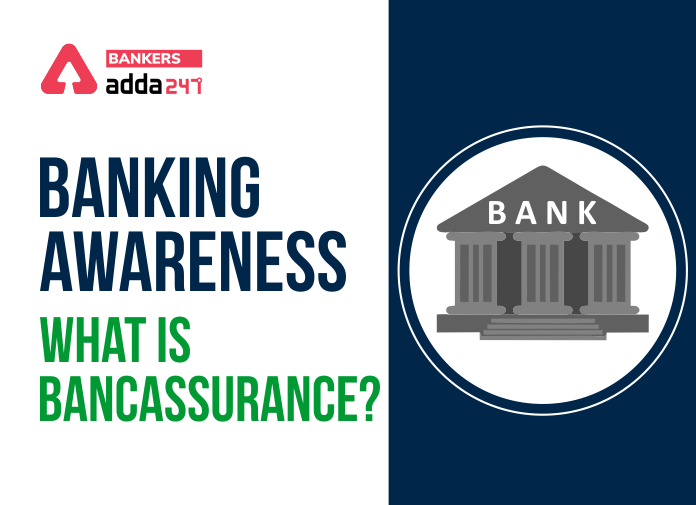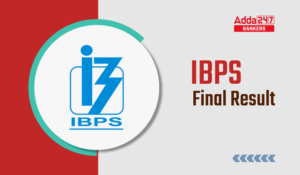Table of Contents
Banking Awareness is an important topic of General Awareness and you can ace this topic with revisions. This topic is also important from Interview point of view. In this article, we will covering the topic of Bancassurance which is in news for a long time now as many banks are partnering with insurance companies. Let’s take a look to see how banks and insurance companies benefit from this relationship.
Also check,
| What is MCLR? | Bank Cheques: Different Types of Cheques and its features | What Are NBFC And Their Functions |
What is Bancassurance?
Bancassurance refers to the process of selling of insurance through a bank’s established distribution channels. we can also say that Bancassurance is the provision of insurance (assurance) products by a bank. We use bancassurance because banks and insurance companies merged and banks sought to provide insurance, especially in markets that have been liberalized recently.
Bancassurance has become significant phenomenon where Banks are now a major distribution channel for insurers, and insurance sales a significant source of profits for banks. It is also because banks can often sell insurance at better prices (i.e., higher premiums) than many other channels, and they have low costs as they use the infrastructure (branches and systems) that they use for banking.
Bancassurance basically rests on the relationship the customer has developed over a period of time with the bank. And it is mainly pushing risk products through banks is a much more cost-effective affair for an insurance company compared to the agent route, while, for banks, considering the falling interest rates, fee based income coming in at a minimum cost is more than welcome.
Also Read,
Advantages of Bancassurance:
Given below factors have mainly led to success of bancassurance
(i) Pressure that banks’ have on profit margins. Bancassurance is a great way to offers another area of profitability to banks with little or no capital outlay. A small capital outlay in turn means a high return on equity.
(ii) A desire to provide one-stop service to customer. Currently, convenience is a one of the major issue in managing a person’s day to day activities. A bank, which can market insurance products, has a competitive edge over its competitors. It can basically provide complete financial planning services to its customers under one roof.
(iii) Opportunities for sophisticated product offerings to customers.
(iv) Opportunities for greater customer lifecycle management to customers.
(v) Diversify and grow revenue base from existing relationships between the bank and customers.
(vi) It will Diversify risks by tapping another area of profitability.
(vii) The realization that insurance is one of the necessary consumer need. Banks can now use their large base of existing customers to sell insurance products.
(viii) Bank currently aims to increase percentage of non-interest fee income
(ix) Cost effective use of premises to provide this facility.
Also Read,
| SBI PO 2020: Preparation Tips, Strategy, & Study Plan | Best Approach Towards Solving Error Detection In Banking Exam | How to Target SBI PO 2020 |
Various Models for Bancassurance
There are Various models which are used by banks for bancassurance.
(a) Strategic Alliance Model : In this Model, there is usually a tie-up between a bank and an insurance company. The bank only markets the products of the insurance company but they do not do marketing for the products, no other insurance functions are carried out by the bank.
(b) Full Integration Model : Under this model, It entails a full integration of banking and insurance services. The bank can sells the insurance products under its brand acting as a provider of financial solutions matching customer needs. Bank not only controls sales and insurer service levels but also includes approach to claims. In this model, the Bank has an additional core activity almost similar to that of an insurance company.
(c) Mixed Models: In this Model, the marketing is done by the insurer’s staff and the bank is responsible for generating leads only. Or we can also say, the database of the bank is sold to the insurance company. This approach requires very little technical investment.
Also read,
| How To Manage Mental Stress During Lockdown? | Share Your Success Story And Inspire Others | Lockdown 2.0 – What are Red, Orange and Green Zones? |
Guidelines for Banks for Entry of banks into Insurance business
1.Scheduled commercial bank are permitted to undertake insurance business as agent of insurance companies on fee basis, without any risk participation. The subsidiaries of banks are also be allowed to undertake distribution of insurance product on agency basis.
2. Banks which satisfy the eligibility criteria which is given below will be permitted to set up a joint venture company for undertaking insurance business with risk participation, subject to safeguards. The maximum equity contribution with such a bank can hold in the joint venture company will normally be 50 per cent of the paid-up capital of the insurance company. On a selective basis the Reserve Bank of India may also can permit a higher equity contribution by a promoter bank initially, pending divestment of equity within the prescribed period. The eligibility criteria for joint venture participant are as under:-
(a) The net worth of the bank should be equal to or greater than Rs.500 crore;
(b) The CRAR of the bank should be equal to or greater than 10 per cent;
(c) The level of non-performing assets should also be reasonable;
(d) The bank should have gain a net profit for the last three consecutive years;
(e) The track record of the performance of the subsidiaries, if any, of the concerned bank should be satisfactory and at par with market.



 IBPS Final Result 2025 Coming Out Tomorr...
IBPS Final Result 2025 Coming Out Tomorr...
 Simple Tips to Avoid Common Mistakes In ...
Simple Tips to Avoid Common Mistakes In ...
 Important Topics & Shortcuts for IDB...
Important Topics & Shortcuts for IDB...


